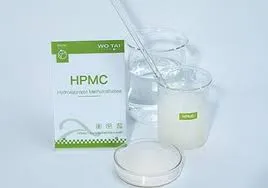
Dec . 07, 2024 06:38 Back to list
Manufacturing Process of Hydroxyethyl Cellulose and Its Applications in Various Industries
Manufacturing Process of Hydroxyethyl Cellulose
Hydroxyethyl cellulose (HEC) is a non-ionic, water-soluble polymer derived from cellulose, which is a natural polymer found in plant cell walls. HEC is widely used in various industries, including pharmaceuticals, cosmetics, food, and construction, due to its thickening, stabilizing, and film-forming properties. This article aims to provide an overview of the manufacturing process of hydroxyethyl cellulose, highlighting the key steps involved, raw materials used, and quality control measures implemented.
Raw Materials
The main raw material for the production of hydroxyethyl cellulose is natural cellulose, which is typically sourced from wood pulp, cotton, or other plant materials. The cellulose is first purified and processed to remove impurities such as lignin and hemicellulose. Following this, ethylene oxide, a highly reactive chemical compound, is also utilized in the process. Ethylene oxide reacts with the hydroxyl groups present in cellulose to introduce hydroxyethyl groups, creating hydroxyethyl cellulose.
Synthesis of Hydroxyethyl Cellulose
The production of HEC involves several key steps
1. Cellulose Preparation The starting cellulose undergoes pre-treatment to increase its reactivity. This may involve drying and grinding the cellulose into a fine powder to enhance the surface area for subsequent chemical reactions.
2. Etherification Reaction The finely powdered cellulose is then mixed with an aqueous solution of sodium hydroxide (NaOH), which swells the cellulose and prepares it for etherification. After the cellulose has been sufficiently swollen, ethylene oxide is introduced to react with the hydroxyl groups of cellulose. The temperature and pressure conditions are carefully controlled during this step to ensure optimal reaction rates and product quality. The etherification reaction can take several hours, and the extent of substitution with hydroxyethyl groups can be monitored to achieve the desired properties.
3. Neutralization Once the etherification is complete, the reaction mixture is neutralized by adding an acid, commonly hydrochloric acid (HCl), to deactivate any remaining sodium hydroxide and to stop the reaction. This neutralization step is crucial for ensuring the safety and effectiveness of the final product.
4. Purification The crude HEC product then undergoes purification processes, which may include washing with water or alcohol to remove unreacted materials and by-products. Centrifugation or filtration methods are often employed to separate the purified HEC from the liquid phase.
hydroxyethyl cellulose manufacturing process

5. Drying After purification, the HEC is typically in a wet form. Drying is an essential step to obtain a stable powder form. This is usually achieved through spray drying or other drying techniques. Properly dried HEC can be stored with a longer shelf life and is easier to transport.
6. Milling Once dried, the hydroxyethyl cellulose may be further milled to obtain the desired particle size and texture. The fine powder produced can vary in viscosity depending on the extent of substitution and molecular weight, allowing customization for different applications.
Quality Control
Quality control is a vital aspect of HEC manufacturing, ensuring that the final product meets specific standards and specifications. During the production process, samples are regularly taken for analysis. Parameters such as viscosity, water retention, particle size distribution, and degree of substitution are meticulously evaluated.
Testing is often done using standardized methods, and reagents for quality checks are sourced from reputable suppliers to maintain consistency. Compliance with health, safety, and environmental regulations is also monitored throughout the manufacturing process.
Applications of Hydroxyethyl Cellulose
Hydroxyethyl cellulose finds diverse applications across various sectors. In the pharmaceutical industry, it is utilized as a thickener, film-forming agent, and stabilizer in topical formulations. In cosmetics, HEC serves as an emulsifier and thickener in lotions, creams, and gels. In construction, it is employed as a water retention agent in mortars and as a binder in tile adhesives. The food industry also uses it as a thickening agent to improve texture and viscosity in various products.
Conclusion
The manufacturing process of hydroxyethyl cellulose involves a series of well-defined steps, from cellulose preparation, etherification, and purification, to drying and milling. Due to its exceptional properties, HEC continues to be a critical component across an array of industries. With growing demands for efficient, eco-friendly materials, the development and optimization of HEC manufacturing processes will likely remain a focus of research and innovation.
-
Versatile Hpmc Uses in Different Industries
NewsJun.19,2025
-
Redispersible Powder's Role in Enhancing Durability of Construction Products
NewsJun.19,2025
-
Hydroxyethyl Cellulose Applications Driving Green Industrial Processes
NewsJun.19,2025
-
Exploring Different Redispersible Polymer Powder
NewsJun.19,2025
-
Choosing the Right Mortar Bonding Agent
NewsJun.19,2025
-
Applications and Significance of China Hpmc in Modern Industries
NewsJun.19,2025







